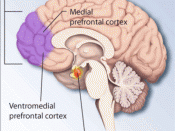The buzz about X (Ecstasy) is reaching an all-time high. Since 1997, teen use of this drug has grown more than any other drug, according to Monitoring the Future, a research group tracking youth behavior; approximately 10.5 percent of 12th graders say they've tried X in the last year.
Ecstasy is supposed to bring about a feeling of euphoria. It shuts off parts of your brain and supplants an extended dose of adrenaline and seratonin (that stuff in chocolate that makes you feel good) so you're happy and carefree -- or feel nothing at all. But a recent Johns Hopkins University study shows that over an extended period of time, Ecstasy gradually destroys parts of the brain that regulate memory, sleep, sexual function and moods.
What else do we know about X? Below, the experts answer your questions.
What is Ecstasy?
Ecstasy is the street name for MDMA, also known as X, E, Adam and Roll.
It can make you have warm and fuzzy feelings for just about anyone-whether it's your boyfriend or the Quickie-Mart cashier. The Drug Enforcement Agency (DEA), however, has no love for the stuff: It made X a Schedule 1 drug, which-like cocaine and pot-is an illegal substance that the DEA says has the highest potential for abuse.
Where did it come from?
Back in 1912, Merck, a German pharmaceutical company, stumbled upon MDMA while developing a new antibleeding medication. The drug sat around unused for 60 years until some researchers found it could alter mood or behavior ("psychoactive" is the technical term). By the early 1980s, psychotherapists were giving it to their patients to help them loosen up and talk about their feelings. And in Texas, where it was dubbed "Ecstasy" for the first time, it could even be legally bought at bars and clubs...



Great Paper
Well written, well researched and very informative. Very good job.
4 out of 4 people found this comment useful.